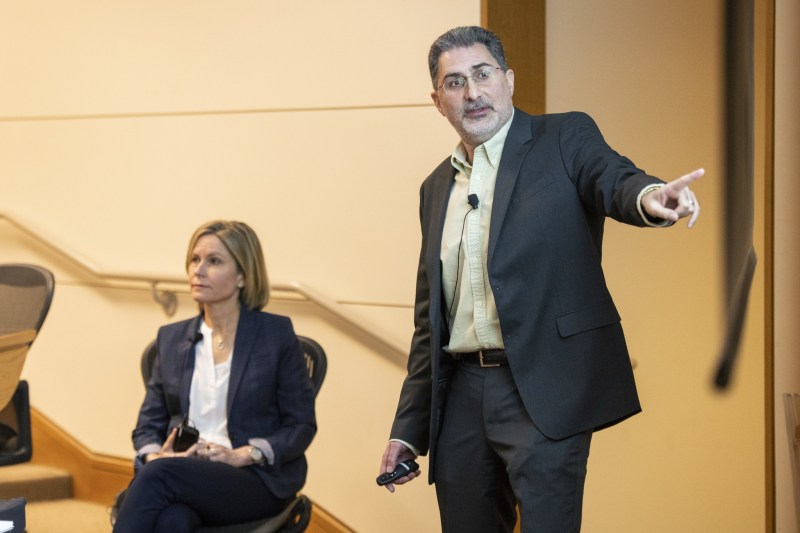In its third meeting of the year, the Faculty Senate was presented information on Stanford’s sustainability plans — particularly those focused on emissions and recycling — and discussed the future of lecturers on campus.
Associate Vice President of Land, Buildings and Real Estate (LBRE) Jack Cleary opened the presentation on sustainability, noting that Stanford was recently ranked first out of 800 universities by the Association for the Advancement of Sustainability in Higher Education.
“We’ve reached a 68 percent reduction in greenhouse gas and an 18 percent decrease in water consumption,” Cleary said. “We also have an estimated $450 million savings over the next five years.”
Cleary emphasized that Stanford still has a lot of room to cover when it comes to environmental efforts. For instance, one of Stanford’s goals is to be 80 percent carbon-free by 2025. To that end, Stanford is ahead of its timetable and well ahead of state and national goals, he said.
“The next easiest step to do is to get to 100 percent clean energy, and we are planning on doing that by 2021,” he said.
Transitioning to the issue of campus waste, sustainability director Fahmida Bangert presented data on Stanford’s recycling programs, including efforts to correctly categorize and process different types of waste.
“Today, 63 percent of our waste is diverted,” Bangert said. “This means 37 percent is reused or recycled. However, if we look at the landfill, we see only 23 percent is [actually] landfill – the rest can get recycled.”
Cleary said that, despite the upfront cost of new programs, they are actually saving Stanford money and will continue to do so until the University achieves a 90 percent reduction in waste.
The Senate then heard a report from the Task Force on Lecturers, headed by history professor Caroline Winterer and computer science professor Mehran Sahami Ph.D. ’99. The committee was appointed by Provost Persis Drell last fall with the goal of identifying issues and suggesting criteria “for the use of lecturers in the teaching mission at Stanford.”
The University defines lecturers as academic staff who teach courses at Stanford but are not professors and do not participate in research.
“Professors taught 55 percent of units, whereas lecturers with benefits taught 22 percent and lecturers without benefits taught 5 percent,” Winterer said.
She added that although lecturers teach a significant portion of classes, they do not receive the same compensation or benefits – such as affordable, nearby housing – that professors do, and still have to come to campus daily and manage comparable workloads.
Sahami said that the current hiring procedure for lecturers is vague and does not outline key issues like length of appointment, review process or opportunity for promotion. He went on to describe some of the committee’s recommendations.
“Core lecturers should receive an initial appointment of one or two years, but after that they should have a longer term appointment of two to four years, subject to performances, eventually leading to promotion as senior lecturers,” Sahami said.
Following the committee’s presentation, some professors advocated for more support for lecturers, while others maintained that the amount of support for different faculty should be proportional to their roles, such as with professors receiving more benefits than lecturers.
“The lines between tenured professors, assistant professors and lecturers are becoming blurred,” said mechanical engineering professor Parviz Moin. “I don’t think being a lecturer is a long-term career path at a research university.”
The Senate will next meet on Nov. 29.
Contact Mihir Patel at mihirp ‘at’ stanford.edu.
